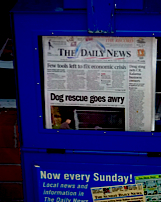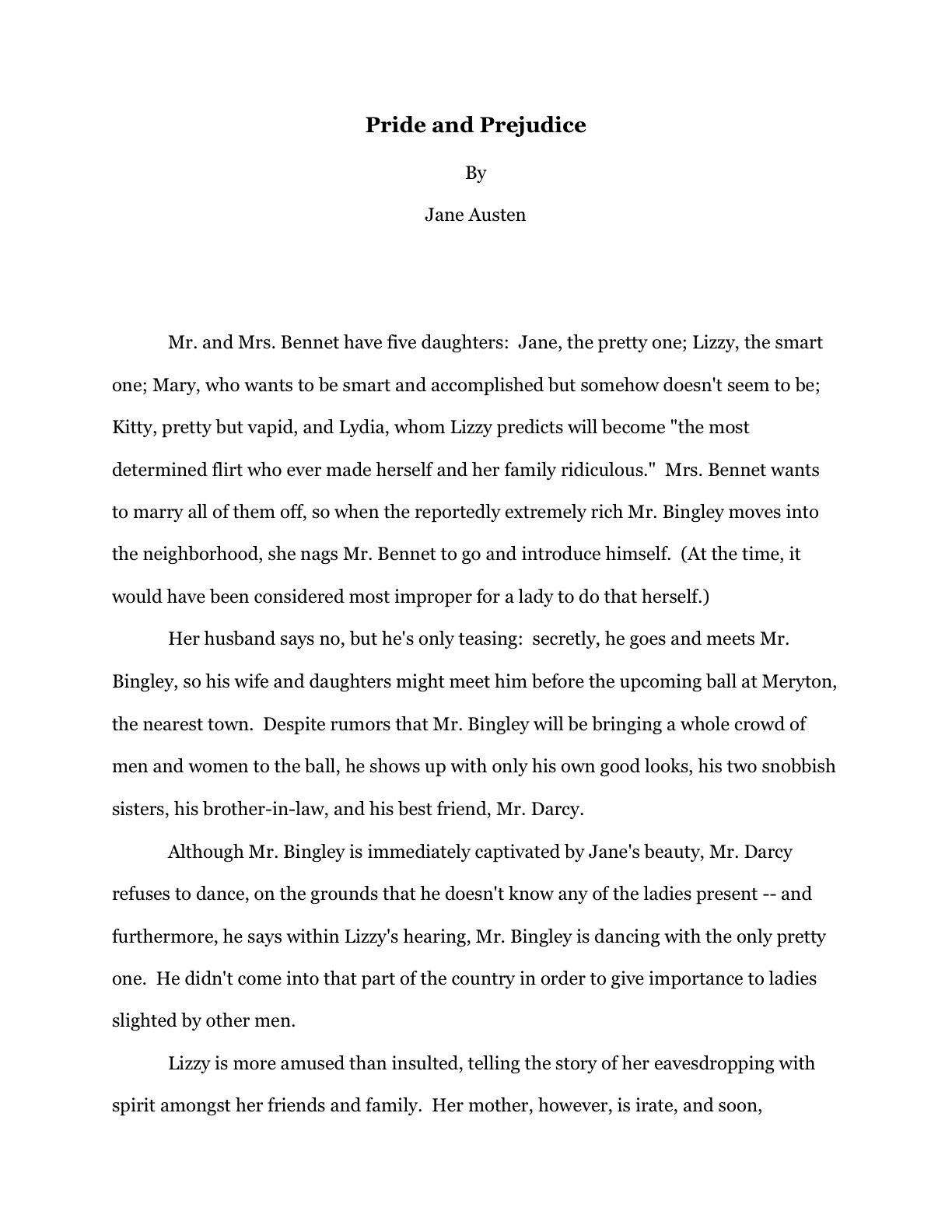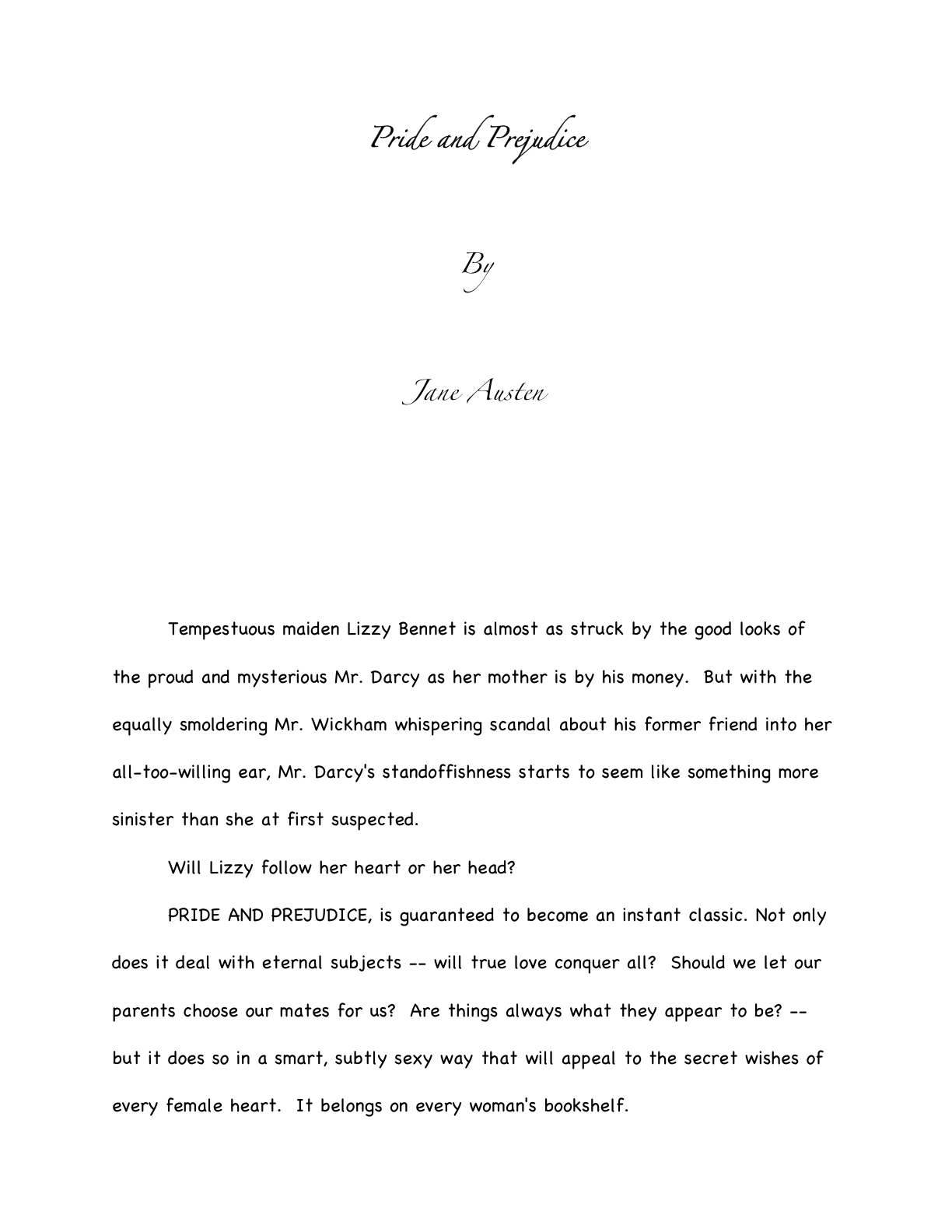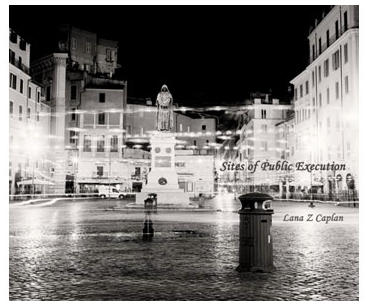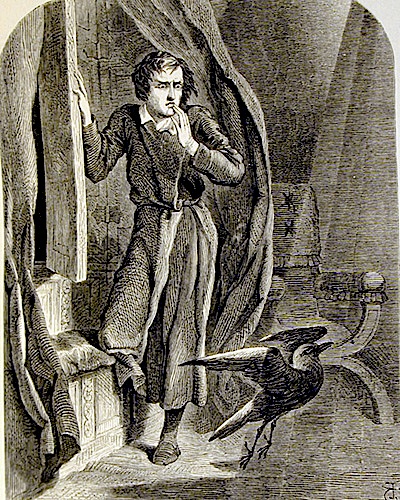
Happy Year of the Ox, everyone!
We’re almost at the end of our very, very long examination of reasons agents tend to reject a submission on page 1, Can’t you feel the air buzzing with excitement? Haven’t you noticed the bees murmuring in their hives, the birds stopping in mid-air to gape, and every little breeze seeming to whisper, “Louise!” like Maurice Chevalier?
No? Are your dreams still haunted by Millicent hovering over your workspace, intoning “Next!” in the same sepulchral tone in which Edgar Allen Poe’s raven purportedly squawked, “Nevermore!” while you try to crank out query letters?
Quite understandable, if so. Facing the truth about just how harsh agents and their screeners can be — and need to be, in order to thin out the steady barrage of applicants for very, very few client positions available in any given year — requires great bravery. “True genius,” Winston Churchill told us, “resides in the capacity for evaluation of uncertain, hazardous, and conflicting information.”
At first, it’s actually easier to keep cranking out those queries and submissions if a writer isn’t aware of the withering gaze to which the average submission is subjected. The pervasive twin beliefs that all that matters is the quality of the writing and that if an agent asks for a full manuscript, s/he is actually going to read the entire thing before making up his or her mind has buoyed many a submitter through months of waiting for a response.
Be proud of yourself for sticking around to learn why the vast majority of manuscripts get rejected, however — and not just because, as Goethe informs us, “The first and last thing required of genius is the love of truth.” In the long run, a solid understanding of the rigor with which the industry eyeballs manuscripts is going to serve you well at every stage of your writing career. While the truth might not set you free of worry, it will at least enable you to take a long, hard look at the opening pages of your manuscript to scout for the most common red flags, the ones that have caused Millicent to grind her teeth so much that she has TMJ syndrome.
She has to do something with her mouth between cries of, “Next!” you know.
Speaking of jaws, you may find yours dropping over today’s selection of red flags. Even in this extensive list of fairly subjective criteria, I have saved the most subjective for last. In fact, this set is so couched in individual response that I have reported them all within quotation marks.
Why, you ask? Because these, my friends, are the rejection reasons defined not by the text per se, but by the reader’s response to your work:
64. “Overkill to make a point.”
65. “Over the top.”
66. “Makes the reader laugh at it, not with it.”
67. “It’s not visceral.”
68. “It’s not atmospheric.”
69. “It’s melodramatic.”
70. “This is tell-y, not showy.”
From an agent, editor, or contest judge’s point of view, each item on this subset of the list shares an essential characteristic: these exclamations are responses to Millicent’s perception that the submission in front of her is unlike what she and her cohort expect a marketable manuscript to resemble. Not because it’s formatted incorrectly or uses language poorly (although submissions that provoke these cries often exhibit these problems, too), but because the writing doesn’t strike them as professional.
Since most aspiring writers operate in isolation, often without even having met anyone who actually makes a living by writing books, this distinction can seem rather elusive, but to the pros, the difference between professional’s writing and that of a talented amateur not yet ready for the big time is often quite palpable. How so? Because the pro is always, always thinking about not only self-expression and telling the story she wants to tell the way she wants to tell it, but about the effect of the writing upon the reader.
What makes that thought so obvious to Millicent on the printed page? A combination of talent and meticulous polish. As Thomas Carlyle liked to put it, “Genius is the capacity for taking infinite pains.”
I’m not merely bringing up the concept of genius for comic effect here, but as a conscious antidote to the all-too-pervasive belief amongst aspiring writers that if only a writer is talented enough, it’s not necessary for him to follow the rules — literarily, in terms of formatting, or by paying any attention to his work’s marketability. But I’ve got to tell you, every agent and editor in the biz has fifteen stories about writers who have tackled them, shoving manuscripts into their startled hands, claiming that their books are works of unusual genius.
Maybe they are and maybe they aren’t, but this kind of approach is a very poor way to win friends and influence people in the industry.
A much, much better way for honest-to-goodness genius to get itself noticed is by polishing that manuscript to a high sheen, then submitting it through the proper channels. Yes, it’s a great deal of work, but as Thomas Alva Edison urged us to bear in mind, “Genius is one percent inspiration and ninety-nine percent perspiration.”
Or, to put it rather more bluntly, Millicent can generally tell the difference between a submission that the writer just tossed off and one that has been taken through careful revision. Many a potentially marketable book has blown its chance with an agent by being stuffed into an envelope before it was truly ready for professional scrutiny.
I just mention, in case any of you were on the cusp of sending out requested materials before having read them IN THEIR ENTIRETY, IN HARD COPY, and OUT LOUD, to catch any lingering unpolished bits.
Yes, I’ve suggested this a few hundred times before. I’m perfectly capable of repeating that advice until the proverbial cows come home, and shall probably continue doing so as long as talented aspiring writers keep submitting manuscripts containing mistakes that even a cursory proofreading would catch.
Enough banging on that particular tom-tom for now. Let’s get back to today’s list, shall we?
The agents on the panel also cried, “Unbelievable!” and “Implausible!” a lot in response to the submitted first pages, but usually in conjunction with other reasons. This is telling: whether a situation is believable or not is largely dependent upon the reader’s life experience, isn’t it? Since my childhood strongly smacked at times of having been directed by Federico Fellini, I would expect that I would tend to find a broader array of written situations plausible than, say, someone who grew up on a conservative cul-de-sac in an upper middle-class suburb, attended to a minor Ivy, and was working at a first job in Manhattan while her parents paid a significant portion of her living expenses because that glamorous entry-level job in the publishing industry didn’t pay enough to live.
Which is to say, of course, that I would probably be a more sympathetic reader for most manuscripts than the average agency screener or editorial assistant.
Even if you hit the submission jackpot and your work slides under the eyes of a Millicent very open to the worldview and style of your book, do bear in mind that it’s the writer’s job to depict that world believably. No matter how sophisticated you expect your target audience to be, remember, the first person who reads your submission at an agency or publishing house is probably going to be new to the milieu you are painting in your book.
Sometimes, this shows up in surprising ways. Recently, I found myself dealing with a well-respected publishing professional who was surprised to learn that couples often pay for their own weddings now, rather than relying upon their parents. Apparently, she was not yet old enough to have many friends well-heeled enough to run their own shows.
Yeah, I know: where had she been?
The numbered reasons above don’t necessarily spring from personal-experiential approaches to judgment, however, so much as how the story is presented. #64, overkill to make a point, and #65, “over the top,” usually refer to good writing that is over-intense in the opening paragraphs. It’s not necessarily that the concept or characterization is bad, or even poorly-drawn: there’s just too much of it crammed into too short a piece of prose.
Since most of us were taught that the opening of any piece of writing needs to hook the reader, the critique of over-intensity can seem a bit contradictory, if not downright alien. As we’ve discussed many times before, good writers are people of extraordinary sensitivity; “Genius,” Ezra Pound taught us, “is the capacity to see ten things where the ordinary man sees one.” So is it really all that astonishing when an aspiring writer attempting to catch an agent’s attention (especially one who has attended enough writers’ conferences to learn that Millicent LIKES books that open with action) begins with slightly too big a bang?
Not really, but this is a classic instance of where additional polishing can make the difference between an exciting opening scene and one that strikes Millicent as over-the-top. The trick to opening with intensity is to get the balance right.
You don’t want to so overload the reader with gore, violence, or despair that she tosses it aside immediately, nor do you want to be boring. Usually, though, it is enough to provide a single strong, visceral opening image, rather than barraging the reader with a lengthy series of graphic details.
Before half of you start reading the opening page of THE LOVELY BONES to me, allow me to say: I know, I know. I don’t make the rules; I just comment upon them.
Allow me to remind you: there is no such thing as a single book that will please every agent and editor in the industry. If you are worried that your work might be too over the top for a particular agency, learn the names of four or five of their clients, walk into your nearest well-stocked bookstore, and start pulling books from the shelves. Usually, if your opening is within the intensity range of an agency’s client list, your submission will be fine.
#69, “It’s melodramatic,” and #66, “Makes the reader laugh at it, not with it,” are the extreme ends of the believability continuum. Both tend to provoke what folks in the movie biz call bad laughter, chuckles that the author did not intend to elicit; because the writing seems mismatched to the action (the most common culprit: over-the-top or clichéd dialogue), the reader’s willing suspension of disbelief is broken.
Thus, both #69 and #66 refer to ways in which the narrative pulls the reader out of the story — the exact opposite of the goal of the hook, to draw the reader into it.
What’s the difference between melodrama and drama, you ask? The pitch at which the characters are reacting to stimuli — if your protagonist bursts into tears because her mother has died on page 1, that will generally feel real, but if she sings a self-pitying aria because there is no milk for her cornflakes on page 1, chances are good that you’ve strayed into melodrama.
Need I even say that the rise of reality TV, which is deliberately edited to emphasize interpersonal conflict, has increased the amount of melodrama the average agency screener encounters in submissions on any given day? Or even any given hour?
Usually, melodrama is the result of the stakes of the conflict shown not being high enough for the characters. As a general rule of thumb, it’s dramatic when a character believes that his life, welfare, or happiness is integrally involved with the outcome of a situation; it’s melodramatic when he ACTS as though his life, welfare, or happiness is threatened by something minor. (As I’ve mentioned earlier in this series, “But the protagonist’s a teenager!” is not an excuse that generally gains much traction with Millicent.)
If you open with a genuine conflict, rather than a specious one, you should be fine, but do bear in mind that to qualify, the conflict has to matter to the reader, not just to you. As I pointed out above, one mark of professional writing is a clear cognizance of the reader’s point of view; many a manuscript has been scuttled by bad laughter at a submission’s overblown insistence that a minor inconvenience is one of the major slings and arrows to which flesh is prey.
As Carl Sagan so trenchantly informed us, “the fact that some geniuses were laughed at does not imply that all who are laughed at are geniuses. They laughed at Columbus, they laughed at Fulton, they laughed at the Wright Brothers. But they also laughed at Bozo the Clown.”
And this goes double if you are writing comedy, because the line between cajoling the reader into laughing along with the narrative and at it is a fine one. Overreaction to trifles is a staple of film and television comedy, but it’s hard to pull off on the printed page. Especially on the FIRST printed page, when the reader is not yet fond of the protagonist or familiar with his quirks — much sitcom comedy relies upon the audience’s recognizing a situation as likely to trigger character responses before the character realizes it, right?
Generally speaking, comedy grounded in a believable situation works better in a book opening than a scene that is entirely wacky, or where we are introduced to a character via his over-reactions. The more superficial a situation is, the harder it is for the reader to identify with the protagonist who is reacting to it.
#71, “It’s not visceral,” and #72, “It’s not atmospheric,” also share a continuum. The latter deals with a sense of place, or even a sense of genre: if a reader can make it through the first page and not be sure of the general feeling of the book, you might want to rework it before you submit. Ditto if the reader still doesn’t have a strong impression of what it would be like to stand in the room/in the wilderness/on the burning deck where your opening scene takes place.
Not that you should load down your opening with physical description — that was a bugbear described earlier on the Idol list, right? Just provide enough telling details to make the reader feel as if he is there. (Because, after all, “The essence of genius is to know what to overlook,” as William James teaches us.)
And, if you can, do it through action and character development, rather than straightforward narrative. That way, you will avoid pitfall #70,”This is tell-y, not showy.” Because of all the common writerly missteps that a pro would polish away from both fiction and memoir, nothing prompts Millicent to cry, “Next!” faster than prose that tells, rather than shows.
Hey, there’s a reason that show, don’t tell is the single most frequently-given piece of critique.
Visceral details don’t just show — they give the reader the impression of physically occupying the protagonist’s body, vicariously feeling the rude slap of air-conditioning upon sun-warmed skin, the acrid smudge of smoke on the tongue while fleeing the scene of the fire, the sweet tang of the slightly under-ripe peach that girl with long, red hair has just slipped into the protagonist’s mouth.
“The patent system,” Abraham Lincoln noted, “added the fuel of interest to the fire of genius, in the discovery and production of new and useful things.” (Oh, you think it’s easy to come up with an an apt quote every time? Besides, I had to get that redhead’s oral incursions out of your head somehow.)
Let me let you in on a little secret gleaned from years of hanging out with agents and editors at conferences: after they’ve had a few drinks, most of them will start describing the manuscripts they long to pick up in much the same way as a hungry person describes meat. They want something they can sink their teeth into; they want a satisfying sensual experience; they want to savor flavors they’ve never tasted before. They want to be seduced, essentially, by the pleasurable shock of stepping into a ready-made world that is not their own.
Piece o’cake to pull that off on a first page, right?
The visceral details are often crucial to pulling off this magic trick. As I have bemoaned repeatedly in this very forum, the prominence of film and TV as entertainment has led to a positive plethora of submissions that rely exclusively upon visual and auditory details to set their scenes. (During the reign of radio, I am told, sound played a more important role in the average manuscript.) As a result, the vast majority of the first pages Millicent sees do not include any other sense-based detail at all.
Just how large a majority eschew it? Out of every hundred manuscripts a screener reads, perhaps two will include solid, well-described sensual details that are not based upon either sight or sound.
Movies and television limit themselves to these two senses for a very good reason: it’s all they have at their disposal. But a book can work with all the senses — even that sixth one, the one that senses danger and picks up unspoken vibes. If you can work at least one of these other senses into the first few paragraphs of your submission, you will be sending a signal to that screener that perhaps yours is the book that will seduce her boss this week.
And that, my friends, is something to celebrate. Perhaps with that redhead pushing the peaches.
If you doubt your ability to do this, try this exercise: sit down late tonight and write a description of your primary festive meal of the recent holiday season, referring to ONLY the senses of vision and hearing. Then set it aside and write another one that uses only smell, taste, touch, and interpersonal vibration. Tomorrow, read them both: which tells the story better?
I’m betting that it’s going to be the one that makes the reader feel more as though she had been sitting at the table with you. Call it the intuition of a long-time professional reader.
There’s another reason to include a lot of visceral detail in your writing: sensations observed through the body tend to feel more personal to the reader. And that’s an important tool for developing voice, especially in memoir and other first-person narratives — after all, your physical experience of the world is different from everybody else’s, every bit as much as your intellectual and emotional interaction with it is. Situating the reader firmly in the midst of the total experience of being the protagonist — or, in a memoir, being you — is a perfectly lovely means of expressing your unique worldview.
“What is genius,” Elizabeth Barrett Browning asked us, “but the power of expressing a new individuality?”
Try to view the imperative to keep the reader in mind not as a limit upon your personal creativity, but as an extension of it, an opportunity to share the world you have created in your book more fully with your audience. Yes, to pull that off, you’re probably going to have to invest quite a bit of time in revision and polishing, but as F. Scott Fitzgerald observed, “Genius is the ability to put into effect what is on your mind.”
Isn’t it better if you fine-tune that effect, rather than leaving the details to Millicent’s imagination? If the nature of genius has been the subject of so much disagreement amongst great minds who have boasted at least a nodding acquaintance with it (well, maybe not Sagan, but I liked the quote), is it either reasonable or desirable to assume that Millicent’s view of either the world of your book or the world at large is necessarily going to coincide with what you had in mind when you wrote it unless you take the infinite pains to make her feel as if she’s there?
A few last thoughts on this list follow next time, possibly along with a few additional first-page rejection reasons I’ve spotted since the Idol agents were kind enough to lambast submitters in order to come up with this list. In the meantime, enjoy the lunar new year, and keep up the good work!




